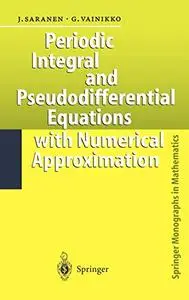Principles of Partial Differential Equations by Alexander Komech
English | PDF(True) | 2009 | 165 Pages | ISBN : 1441910956 | 3.2 MB
This concise book covers the classical tools of PDE theory used in today's science and engineering: characteristics, the wave propagation, the Fourier method, distributions, Sobolev spaces, fundamental solutions, and Green's functions. The approach is problem-oriented, giving the reader an opportunity to master solution techniques.




